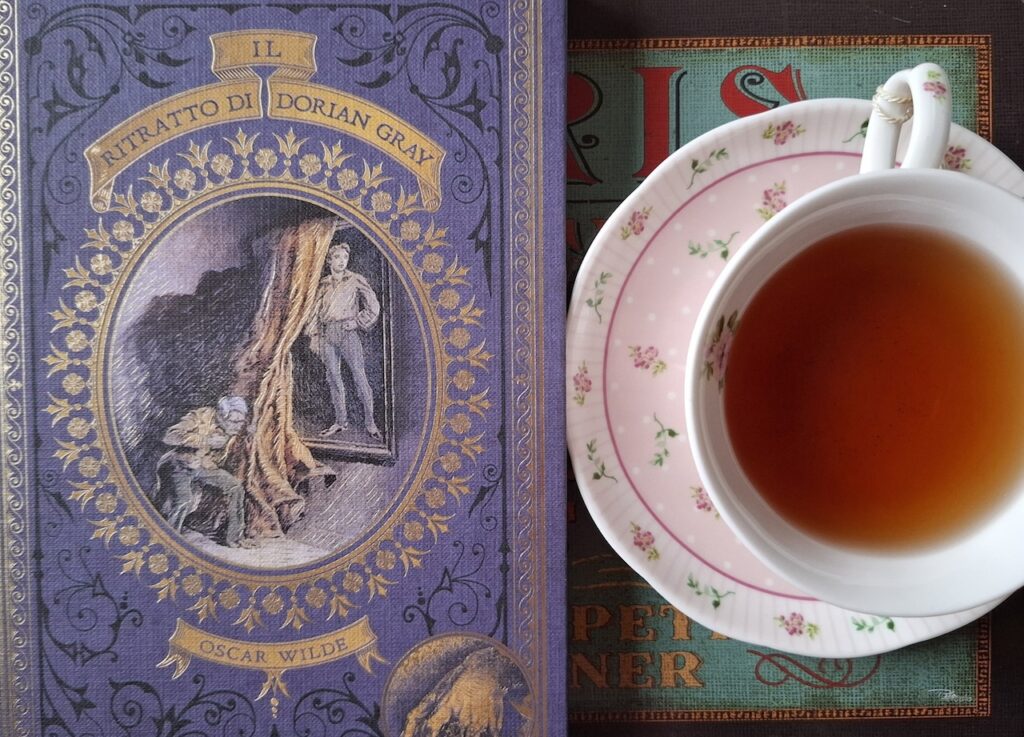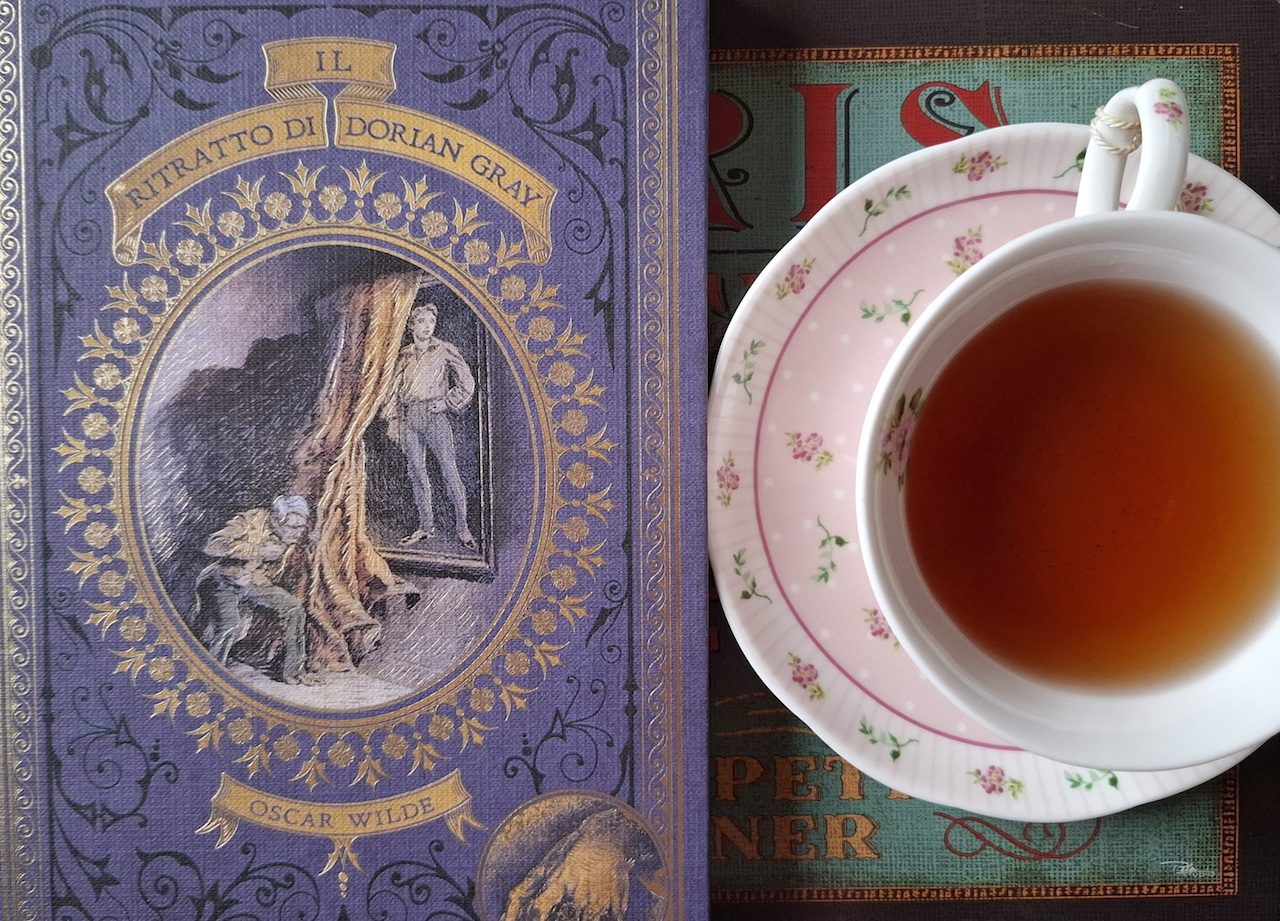“Il ritratto di Dorian Gray” di Oscar Wilde è un testo che ho riletto un paio di volte nella vita, personalmente l’ho decisamente più apprezzato in età adulta.
Ambientato nell’epoca vittoriana il tè non poteva non essere presente in questo romanzo:
“Bussarono alla porta e il cameriere entrò con il vassoio del tè e lo posò sul tavolino giapponese. Si udì un tintinnare di tazze e di piattini e il sibilo flautato di un samovar georgiano. Un paggio portava due coppe cinesi. Dorian Gray si alzò e versò il tè.”
Il samovar nasce ne XIX secolo e soprattutto in Russia diventa simbolo di ospitalità. Questo oggetto antico non è una vera e propria teiera ed è piuttosto imponente, ma permette anche di mantenere l’acqua calda alla giusta temperatura per poter continuare a servire il tè. All’epoca il samovar in acciaio era dotato di un braciere, oggi invece è elettrico come i bollitori. Sopra di esso veniva appoggiata la teiera sempre in acciaio per mantenere la temperatura desiderata.
Ho molto apprezzato il film in bianco e nero, che ha solo due scene girate in Technicolor ma fondamentali, del lontano 1945 con una ancora giovanissima Angela Lansbury che fu candidata come attrice non protagonista per questo film nel ruolo di Sibyl Vane. Non ottenne l’Oscar ma si aggiudicò il Golden Globe. Conosciuta in tutto il mondo come la “Signora in giallo” e per la sua bellissima voce nella canzone per il film della Disney “Beauty and the Beast”, dimostra già al tempo di saper cantare benissimo.
Il film riprende il romanzo passo a passo. La casa di Dorian Gray sembra un museo ricco di archetipi potenti dalla Dea Bastet alla mitologia greco-romana. Compare il tè e il samovar descritto. Molto belli anche i costumi e le inquadrature.
Ultimamente sto riscoprendo sempre di più il vecchio cinema d’altri tempi.
La psicologia dei personaggi è molto ben strutturata si denota la passione per la filosofia da parte di Oscar Wilde, dove tratta già argomenti importanti come il narcisismo libertino, la dipendenza, i concetti di anima e animus e dell’integrazione degli aspetti luce e ombra.

“Il Ritratto di Dorian Gray” di Oscar Wilde – Photo@Veru
Tea in Dorian Gray

“The Picture of Dorian Gray” by Oscar Wilde is a text that I have reread a couple of times in my life, personally I have definitely appreciated it more in adulthood.
Set in the Victorian era, tea could not fail to be present in this novel:
“There was a knock at the door and the waiter entered with the tea tray and placed it on the Japanese table. There was a clinking of cups and saucers and the flute-like hiss of a Georgian samovar. A page brought two Chinese cups. Dorian Gray rose and poured the tea.”
The samovar was born in the 19th century and especially in Russia it became a symbol of hospitality. This ancient object is not a real teapot and is rather imposing, but it also allows you to keep the hot water at the right temperature to continue serving tea. At the time the steel samovar was equipped with a brazier, today it is electric like kettles. The steel teapot was placed on top of it to maintain the desired temperature.
I really appreciated the black and white film, which has only two scenes shot in Technicolor, from the distant 1945 with a still very young Angela Lansbury who was nominated as a supporting actress for this film in the role of Sibyl Vane. She did not get the Oscar but won the Golden Globe. Known throughout the world as “Murder, She Wrote” and for her beautiful voice in the song for the Disney film “Beauty and the Beast”, she already shows at the time that she can sing very well.
The film takes up the novel step by step. Dorian Gray’s house seems like a museum full of powerful archetypes from the Goddess Bastet to Greco-Roman mythology. The tea and the samovar described appear. The costumes and shots are also very beautiful.
Lately I’m rediscovering more and more the old cinema of the past.
The psychology of the characters is very well structured, showing Oscar Wilde’s passion for philosophy where he already deals with important topics such as libertine narcissism, dependence, the concepts of anima and animus and the integration of the light and shadow aspects.



No responses yet